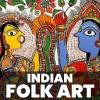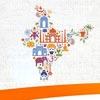Dussehra 2024 A Day of Victory and New Beginnings

Blog Post
Dussehra, also known as Vijayadashami, is a vibrant festival that celebrates the timeless victory of good over evil, a theme deeply embedded in Hindu mythology.
This auspicious occasion is marked by the symbolic triumph of Lord Rama, who defeated the ten-headed demon king Ravana, and Goddess Durga, who vanquished the buffalo demon Mahishasura.
These narratives are not just tales of conquest; they serve as powerful reminders of the eternal struggle between righteousness and malevolence.
As one of the most significant festivals in the Hindu calendar, Dussehra signifies the conclusion of Navratri, a nine-night festival dedicated to the worship of the divine feminine.
The culmination of these celebrations brings forth a new season filled with positivity, hope, and renewal. People come together during this time to reflect on their values, seek blessings, and promote harmony in their communities.
On October 12, 2024, Dussehra will be celebrated with much fervor across India. Families and friends will exchange greetings, share sweets, and engage in joyous celebrations that embody the spirit of togetherness.
The festival is also marked by grand processions, vibrant cultural performances, and the burning of effigies symbolizing evil, creating an atmosphere of festivity and camaraderie.
Dussehra serves as a reminder to everyone that, despite life's challenges, good ultimately prevails, encouraging individuals to embrace positivity and strive for a brighter future.
Dussehra 2024 Spreading Joy and Triumph
Dussehra, also known as Vijayadashami, is one of the most significant festivals in Hindu culture. Celebrated with great enthusiasm and devotion, it marks the victory of good over evil, symbolizing the triumph of righteousness and morality.
Dussehra is celebrated on the tenth day of the Hindu month of Ashwin, following the nine-day festival of Navratri. It is a day that commemorates Lord Rama's victory over the demon king Ravana, showcasing the ultimate defeat of evil forces. In different regions of India, Dussehra is celebrated with various traditions, but the core message remains the same — the eradication of evil and the victory of good.
Ravan Dahan Auspicious Timing for 12th October 2024
According to the Hindu calendar, the Dashami Tithi of the Shukla Paksha in the month of Ashwin begins on 12th October at 10:59 AM and concludes on 13th October at 9:08 AM. Hence, Dussehra will be celebrated on 12th October.
The most favorable time for Ravan Dahan falls during the Vijay Muhurat, which is from 2:03 PM to 2:49 PM on that day. Additionally, the auspicious time for performing rituals and prayers will be from 1:17 PM to 3:35 PM, during which devotees can offer prayers to Lord Ram and perform other religious practices.
This auspicious period is considered ideal for carrying out rituals as it is believed to enhance the spiritual significance of the worship and ensure success in all endeavors.
The symbolism of Lord Rama’s Triumph Over Ravana
The essence of Dussehra lies in the legendary story from the Ramayana, where Lord Rama defeats the ten-headed demon king Ravana to rescue his wife, Sita. Ravana, despite his intelligence and power, symbolizes arrogance, greed, and evil. The burning of Ravana’s effigy during Dussehra celebrations represents the destruction of these negative qualities within oneself. It also signifies the importance of following a righteous path in life, even when faced with adversity. The triumph of Lord Rama reminds devotees that truth and justice will always prevail over wrongdoing.
Relevance of Dussehra in 2024
In 2024, Dussehra continues to hold profound significance, not just as a religious festival but as a reminder of timeless values. In an age where challenges and moral dilemmas abound, the message of Dussehra remains relevant. It serves as a reminder that, even in the modern world, the victory of good over evil can inspire personal and societal transformation.
The festival encourages individuals to reflect on their own lives, letting go of negative habits and thoughts, and embracing new beginnings filled with positivity, strength, and hope for a better future. This year, Dussehra is an opportunity to celebrate resilience and unity, crucial virtues for overcoming contemporary struggles.
Historical and Mythological Background of Dussehra
The Essence of Dussehra: Lord Rama's Victory Over Ravana
Dussehra, also known as Vijayadashami, is deeply rooted in the epic story of the Ramayana. It commemorates the victory of Lord Rama over the ten-headed demon king Ravana, symbolizing the triumph of good over evil. Ravana, who abducted Lord Rama’s wife Sita, represents negative qualities like ego, pride, greed, and ignorance. Lord Rama, with the help of his loyal brother Lakshmana, the monkey god Hanuman, and his army, waged a battle to rescue Sita. The final day of the battle, when Rama slayed Ravana, is celebrated as Dussehra, symbolizing the victory of righteousness.
Ravana: The Symbol of Ego and Ignorance
Ravana’s ten heads are often interpreted as representing the ten evils that hinder human progress—ego, lust, anger, delusion, greed, envy, pride, attachment, selfishness, and injustice. His defeat by Lord Rama is not just a literal victory, but a metaphorical one, encouraging individuals to conquer their inner demons. Each year, the burning of Ravana’s effigies during Dussehra serves as a reminder to eliminate these vices from our lives and follow the path of dharma (righteousness).
Regional Variations: Durga Puja and Dussehra
While the story of Lord Rama and Ravana forms the central theme of Dussehra in most parts of India, the festival is celebrated differently in some regions. In eastern India, especially in West Bengal, the focus is on Durga Puja, which coincides with Dussehra. Here, the festival marks Goddess Durga’s victory over the buffalo demon Mahishasura, symbolizing the triumph of divine feminine power over evil. Durga Puja is a grand celebration, filled with artistic pandals, cultural performances, and vibrant rituals, culminating in the immersion of Durga idols on Vijayadashami.
These regional variations reflect the diverse yet unified spirit of Dussehra, as it signifies the defeat of evil forces, be it Ravana or Mahishasura, across India.
Dussehra Traditions and Celebrations Across India
Diverse Celebrations of Dussehra Across India
Dussehra, a vibrant festival celebrated throughout India, takes on diverse forms in different regions. It marks the victory of good over evil and is observed with unique cultural traditions in various parts of the country.
Ram Leela Performances
One of the most iconic traditions during Dussehra is the staging of Ram Leela, theatrical performances that depict episodes from the Ramayana. These performances, usually held in large outdoor settings, narrate the life of Lord Rama, focusing on his battle with Ravana. In the days leading up to Dussehra, Ram Leela plays are performed across towns and cities, with actors dressed as key characters from the epic. The dramatic storytelling and grand visuals create an immersive experience, drawing large crowds.
Burning of Effigies: Ravana, Meghnath, and Kumbhkaran
On the day of Dussehra, one of the most well-known traditions is the burning of effigies of Ravana, Meghnath (his son), and Kumbhkaran (his brother). These towering effigies, sometimes exceeding 50 feet in height, are set ablaze to symbolize the destruction of evil. This tradition is especially popular in North India, particularly in cities like Delhi and Varanasi, where large crowds gather to witness the spectacular event. The moment the effigies are burnt is celebrated with fireworks, music, and cheering, signifying the triumph of good over evil.
Regional Differences: Mysore Dussehra and Kolkata Durga Puja
In Mysore, Karnataka, Dussehra is celebrated with grand processions and royal pageantry, known as Mysore Dussehra. The city is adorned with lights, and a grand parade featuring the decorated idol of Goddess Chamundeshwari on a golden throne takes place.
In Kolkata, Dussehra is part of the larger Durga Puja celebrations, which are marked by stunningly artistic idols of Goddess Durga, cultural performances, and community feasts. The immersion of the idols in the river on the final day symbolizes Durga's return to her heavenly abode.
These regional celebrations reflect India's rich diversity and the deep-rooted cultural significance of Dussehra.
Also Read: The Most Famous Indian Dishes Captivating the World: Let's go on a journey of taste!
Dussehra 2024: Relevance and Modern Interpretation
Connecting Dussehra’s Significance to Present-Day Life
The timeless message of Dussehra—the victory of good over evil—continues to resonate with the challenges we face in modern society. In today’s world, this battle is not only external but internal, where individuals must confront their own negative emotions, ego, and harmful habits.
Dussehra reminds us that just as Lord Rama conquered Ravana, we too can overcome personal struggles like anger, greed, and fear. The festival symbolizes the ongoing fight for righteousness, fairness, and truth in an era filled with complex moral dilemmas.
Dussehra 2024: Overcoming Challenges and Embracing Positivity
In 2024, Dussehra’s message can inspire individuals to face personal obstacles with courage and determination. Whether battling mental health challenges, professional hurdles, or relationship difficulties, the festival serves as a reminder that no matter how tough the road, perseverance and righteousness can lead to triumph.
Dussehra encourages us to let go of negativity, bad habits, and toxic relationships, paving the way for a fresh start filled with hope and positivity. Much like the symbolic burning of Ravana’s effigy, it’s a time to eliminate the negativity in our lives and move forward with a clear, positive mindset.
Resilience, Unity, and Righteousness in Today’s Society
Dussehra is also a celebration of resilience, reminding us of the importance of standing firm in the face of adversity. The festival highlights the value of unity—both within families and communities—as essential in overcoming challenges. Just as Lord Rama’s victory was achieved with the help of allies like Hanuman and Lakshmana, Dussehra in 2024 inspires collaboration and mutual support.
Moreover, it reflects the need for righteousness and justice, advocating that doing the right thing, even when difficult, leads to lasting victory. In today’s society, Dussehra stands as a powerful reminder to act with integrity, compassion, and resolve, helping to build a better world.
New Beginnings: The Symbolism of Victory
Dussehra is a festival deeply rooted in the triumph of good over evil. As it follows the nine days of Navratri, this day signifies a new beginning, a fresh start after a period of self-reflection and devotion. It’s a time to embrace the victory of righteousness, symbolized by Lord Rama’s defeat of Ravana in the epic Ramayana. The festival serves as a reminder that no matter how strong the obstacles may seem, good will eventually prevail over evil, and success will follow effort and perseverance.
A Fresh Start After Navratri
After the spiritual journey of Navratri, where devotees worship various forms of Goddess Durga, Dussehra provides the perfect moment to start afresh. The nine days of fasting, praying, and celebrating symbolize a cleansing process, both physically and mentally. On the tenth day, Dussehra marks the culmination of this process, encouraging people to embark on new ventures with renewed energy and optimism.
The festival invites people to move forward, leaving behind their past misdeeds, and to face life’s challenges with courage and determination.
Letting Go of Old Grudges and Embracing Growth
Dussehra teaches the importance of letting go of negativity. Just as Lord Rama eliminated the evil of Ravana, this festival motivates individuals to defeat the "Ravana" within—whether it is ego, anger, greed, or grudges. It encourages forgiveness and reconciliation, urging people to mend broken relationships, discard old grudges, and focus on their personal growth and well-being. The day symbolizes the end of inner conflicts, allowing peace and harmony to flourish.
Personal Growth and Eliminating Inner Ravana
Dussehra inspires reflection and self-improvement. The effigy burning of Ravana serves as a symbolic gesture of getting rid of negative traits. It urges individuals to introspect and work towards becoming better versions of themselves. By conquering ego, greed, and anger, people can lead a more fulfilling and successful life, embodying the true spirit of Dussehra—victory over all forms of evil, both external and internal.
Dussehra in the Digital Age: Celebrations in 2024
As technology continues to shape our lives, Dussehra celebrations in 2024 are witnessing significant transformations. Modern technology and social media are bridging gaps, allowing people across the globe to celebrate this festival with innovative digital practices. Here’s a closer look at how these changes are redefining the traditional festivities:
Virtual Ram Leelas and Online Pujas: Global Connections
In 2024, traditional Ram Leela performances, which depict episodes from the Ramayana, have moved beyond physical stages. With the advent of live streaming, people can now experience these plays virtually from any corner of the world. Ram Leelas are streamed on platforms like YouTube, Facebook, and dedicated apps, making it easier for global audiences to stay connected with the festival.
Online pujas have also gained popularity, especially among the younger generation and diaspora communities. Temples are now offering digital darshans and live-streamed rituals, allowing devotees to participate in Dussehra prayers without the need for physical presence. Social media plays a key role in sharing festive wishes, cultural insights, and videos of celebrations, bringing communities closer despite physical distance.
Eco-Friendly Celebrations: A Shift Toward Sustainability
Dussehra 2024 also marks a shift towards more eco-friendly celebrations. Traditional practices, such as burning large effigies of Ravana, Meghnath, and Kumbhkaran, are being reconsidered to reduce environmental impact. Many organizers now opt for biodegradable effigies made from natural materials, minimizing pollution and waste.
Additionally, eco-friendly idols made from clay, seeds, or other organic materials have become a trend, especially in urban areas. These sustainable practices reflect growing environmental awareness, allowing people to celebrate Dussehra responsibly while preserving the festive spirit.
Wishes for a Happy and Prosperous Dussehra 2024
As we celebrate Dussehra 2024, let us take a moment to send warm wishes to everyone around the world. May this festival bring immense happiness, prosperity, and peace to your lives. Dussehra, a celebration of triumph, symbolizes the victory of good over evil, and we hope this festive occasion fills your heart with joy and positivity. Whether you are with family or friends, may this Dussehra mark the beginning of a successful and fulfilling journey for you in the coming days.
The Festival’s Message: Good Triumphs Over Evil
At its core, Dussehra is a reminder of the eternal truth that righteousness always prevails. Just as Lord Rama vanquished Ravana, the festival emphasizes the importance of standing against evil and choosing the path of virtue. In a world often fraught with challenges and moral dilemmas, Dussehra 2024 inspires us to make the right choices, no matter how difficult they may seem. It reminds us that no matter how overwhelming the odds, truth and justice will always emerge victorious in the end.
Hope for New Beginnings
Dussehra also signifies the onset of new beginnings, urging us to leave behind past burdens and embrace a brighter future. The festival gives us an opportunity to introspect and rid ourselves of negative emotions like ego, anger, and hatred, much like the effigies of Ravana are burned to mark the destruction of evil. As we move forward into a new season, Dussehra encourages us to turn over a new leaf, renew our spirits, and strive toward personal growth and transformation.
Embrace Positivity and Joy
This Dussehra, let’s focus on embracing positivity and joy. Use this time to reflect on your journey, make positive changes in your life, and spread happiness. With a fresh outlook, may Dussehra 2024 bring you closer to achieving your dreams while keeping your loved ones close to your heart.
In conclusion,
Dussehra 2024 is more than just a festival; it represents the eternal struggle between good and evil. By embracing its rich traditions and values, we can inspire personal growth and community unity. Let us celebrate this auspicious occasion with joy, positivity, and a commitment to ethical living.
You May Like
EDITOR’S CHOICE












